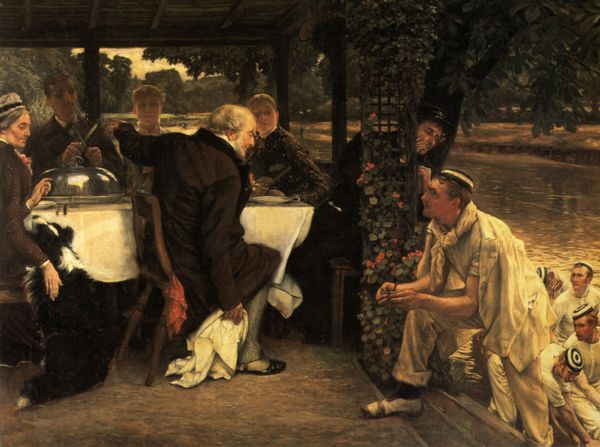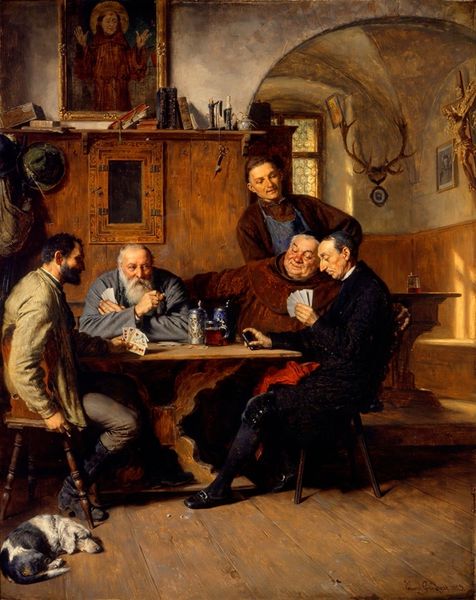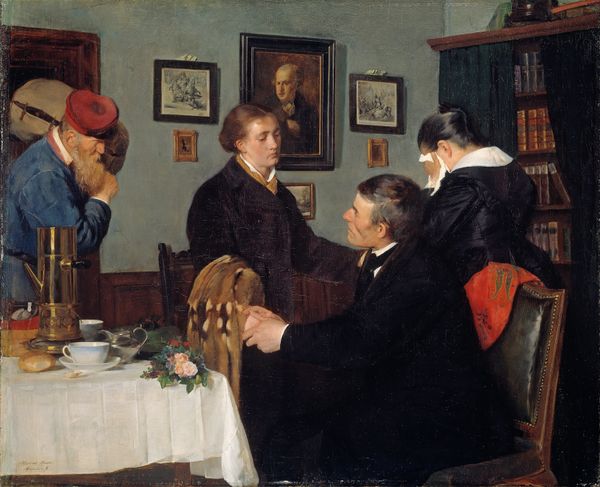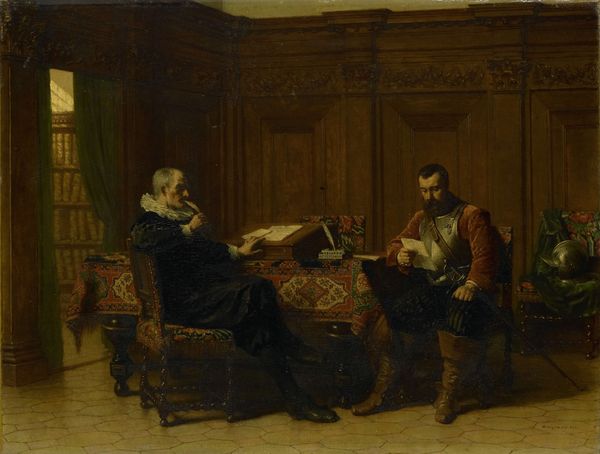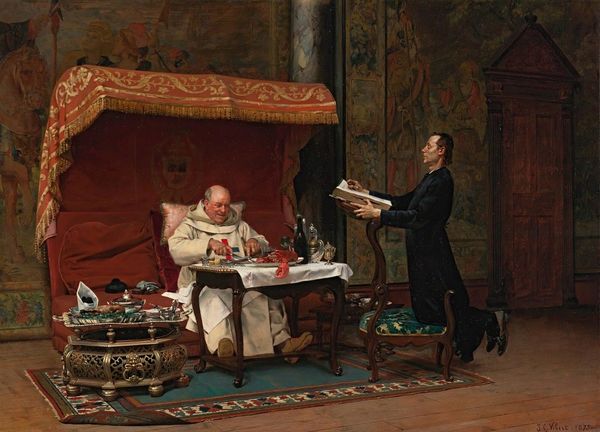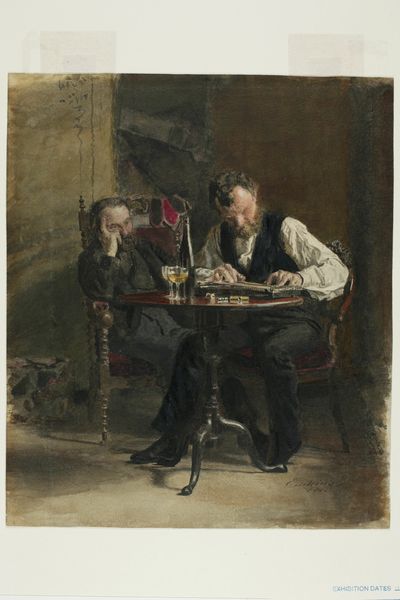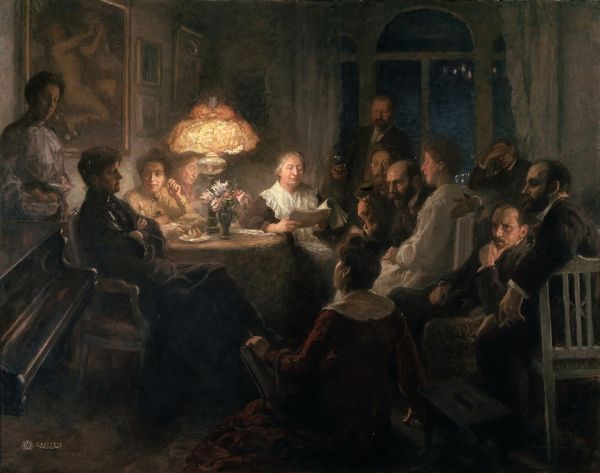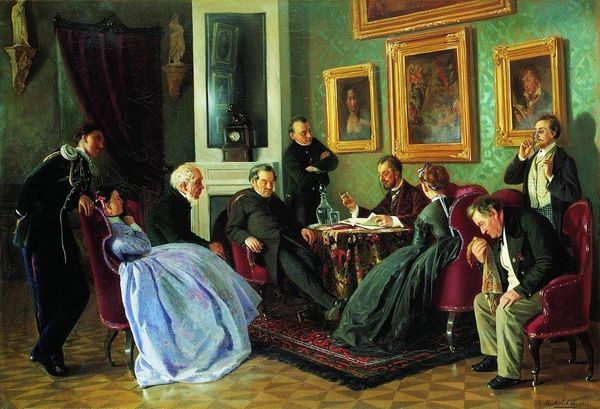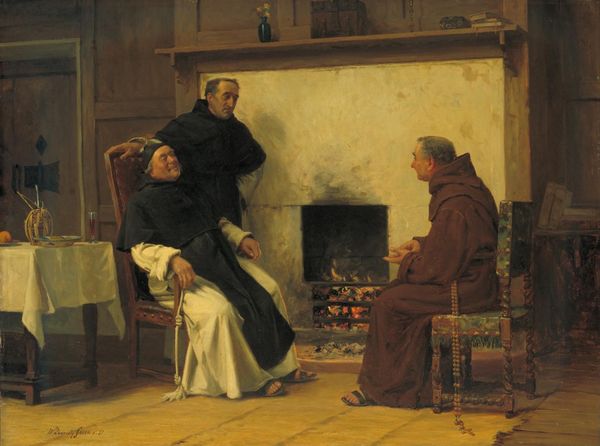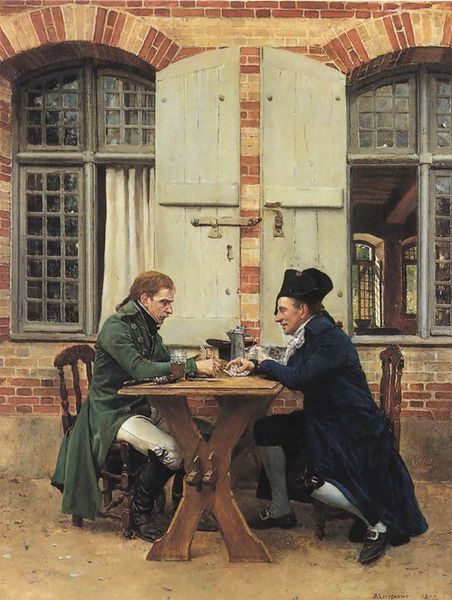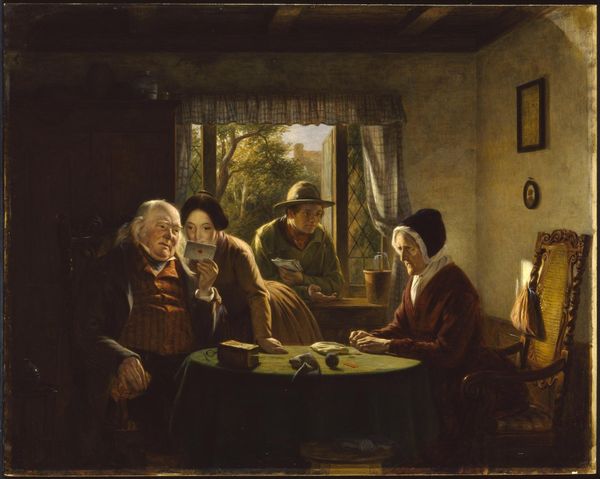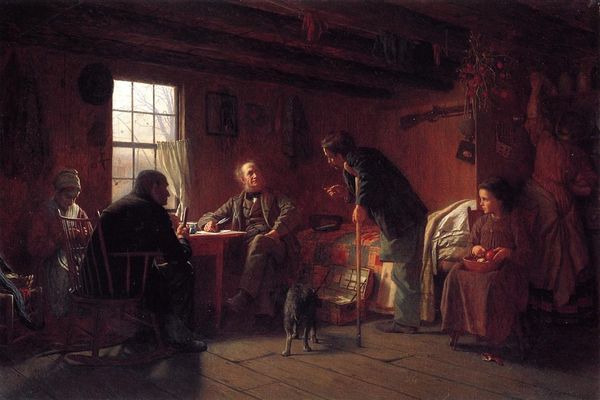
Copyright: Public Domain: Artvee
Curator: This is Ernest Meissonier's "Le vin du curé," painted around 1860. Oil on panel. Editor: The immediate sense I get is of hushed intimacy, the tight composition emphasizing a closed, contemplative mood. The texture seems almost glassy in places, reflecting the subdued light. Curator: It’s a remarkable example of genre painting, placing emphasis on depicting everyday life, particularly in the French countryside. This piece, exhibited during the Second Empire, highlights social hierarchy, the priest occupying a position of local power and influence. Notice his expensive robes. Editor: It is intriguing how Meissonier constructs that power through details like fabric quality, how he manipulates light across its folds. The tactile impression is compelling. What sort of access might he have had to that specific material to portray it with such fidelity? The labour invested to produce such material at the time is also important. Curator: The setting itself provides context. The closed doors, modest repast, even the architecture speak to the Church's embedded role in domestic life. This wasn't created in isolation; it reflects the period's understanding of religious authority, specifically amidst the shifting socio-political landscapes. It was made during Haussmann's renovation of Paris. The social implications of these major reforms were affecting the society in the 1860s, right when this was painted! Editor: So the contrast between public disruption and this private scene is deliberate? Interesting! I am left contemplating how Meissonier, by showcasing these contrasting realities within the very fabric of his paintings, prompts us to question not just who we consume, but also what is actually being depicted here! What elements made it into this frame, and why? Curator: Exactly. The canvas, pigment mixing, and display within a specific setting, are crucial when approaching this sort of art. Editor: Examining this painting has me reassessing assumptions. Not only does it convey atmosphere, but it reveals so much about the art-making practices of that era and our own act of interpretation. Curator: Absolutely. I believe thinking about the time the work was made will bring any viewer closer to comprehending Meissonier's historical contribution and lasting impact on art.
Comments
No comments
Be the first to comment and join the conversation on the ultimate creative platform.
